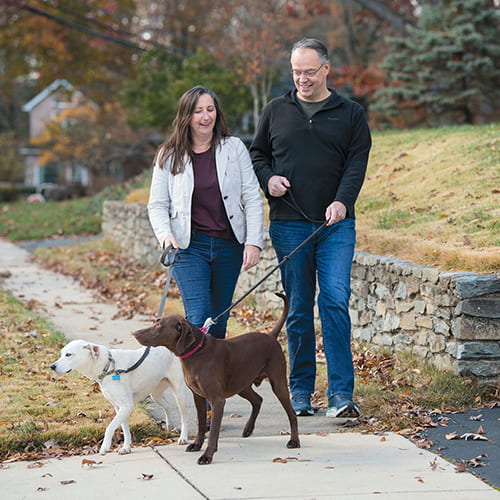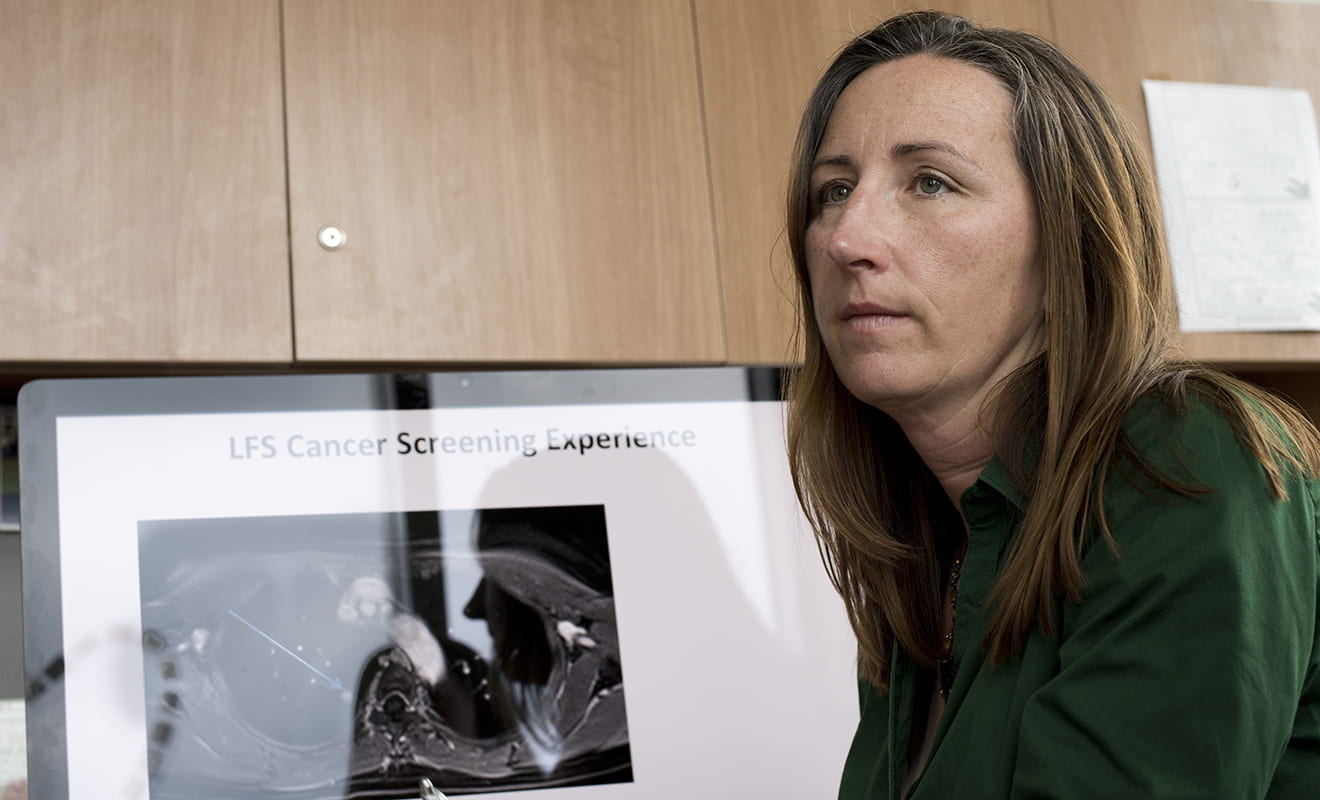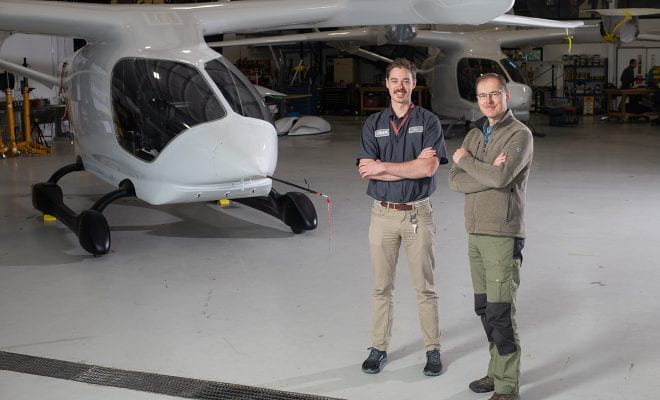In DC and related conditions, however, telomeres are unusually short from birth, and patients tend to have abnormalities in the proteins that maintain them. Faulty telomere biologies also make people unusually prone cancer. And because of that connection, DC research has implications beyond helping patients and their families. In fact, studying telomere biology may help reveal how and why cancer starts—and how it might be prevented. That’s the hope at the heart of Savage’s research, and for two decades, it has been the driving force of her career.
Dyskeratosis congenita is a hereditary disorder that affects as few as one in a million people. The condition, which usually manifests in late childhood or adolescence, can cause a wide array of symptoms, ranging from abnormal finger-and toenails and unusual skin pigmentation to bone marrow failure and pulmonary fibrosis, an accumulation of scar tissue in the lungs that gradually inhibits breathing. DC, as it is known in rare disease circles, also makes people highly susceptible to cancer.
The condition was first described in 1906, but it’s only over the past few decades that scientists have identified the inherited genetic variants involved. This research led to the discovery that DC is actually one of a group of disorders of the telomeres, the segments of non-coding DNA at the ends of our chromosomes that protect them from damage.
“The analogy we always use is the plastic cap at the end of your shoelaces that keep them from fraying,” says Sharon A. Savage ’91, MD, chief of the Clinical Genetics Branch and clinical director of the Division of Cancer Epidemiology and Genetics at the National Cancer Institute (NCI), whose research focuses on DC and related telomere biology disorders. “When our cells divide and our chromosomes are replicated, telomeres get shorter. For the most part, cancer is a disease of aging and there are many interesting associations between telomere length and cancer risk.”

Sharon Savage ’91, MD
“I am really interested in understanding why people get cancer,” Savage says. “I want to understand cancer from the large-scale level of epidemiology, all the way down to the genes and these rare disorders that affect key components of our biology. We need to understand why it’s broken, right? If you don’t know why something is broken, you can’t fix it.”
An Early Science Fascination
Savage grew up in rural Maine, “almost in the middle of nowhere,” she says with a laugh. “Between Bangor, if you know where that is, and Mount Katahdin. My high school graduating class was 70 people.”
No one on either side of her family had gone to college, but Savage was fascinated by science from a young age, and she always knew that higher education was for her. In junior high she read The Double Helix: A Personal Account of the Discovery of the Structure of DNA, molecular biologist James D. Watson’s autobiographical account of the momentous discovery, for which he shared the Nobel Prize with Francis Crick in 1962. Published in 1968, the book later became controversial for ignoring chemist Rosalind Franklin’s critical contributions—a case of historical sexism that Savage mentions wryly today.
“But when I was in seventh grade reading this book by Watson, it was really just remarkable,” Savage says. “I always just wanted to understand it more. I was interested in DNA and cells and biology, and was reading this stuff on my own.”
She was just very engaged, very driven, but also very approachable. She was definitely passionate about research
Keith Picthall ’92
When Savage was a junior in high school, her chemistry teacher connected her with a food science professor at the University of Maine who invited her to work in his lab over the summer, conducting research into pesticides. By the time she began to think about where she might go to college, Savage knew she wanted to be a physician-scientist. She also knew she wanted to see the world beyond her hometown.
“I didn’t have anyone to reach out to,” she says, “but I got a flyer in the mail about WPI, and I thought, ‘Oh, the WPI Plan sounds like something I might really like.’ It was when we went there to visit in person that I realized, ‘This place is for me.’ It wasn’t too big, and it had the project-based curriculum that was exactly what I was seeking. There would be opportunities for research. I knew research was always going to be a part of what I did.”
During her time at WPI, Savage, a biochemistry major, worked as a summer research assistant at the independent Worcester Foundation for Experimental Biology, where she studied cell motility in amoebae, a project that became her Major Qualifying Project. She played tennis—not well, she confesses—but, “It was a lot of fun,” she says. And she joined Alpha Phi Omega, the service fraternity, where she met Keith Picthall ’92, an electrical engineering major whom she would later marry.
Even among the hardworking students at WPI, Savage stood out, Picthall recalls.
“She was just very engaged, very driven, but also very approachable,” he says. “She was definitely passionate about research. My friends and I were all looking for the summer jobs that would pay the most, but for her, it was all about the science.”
Treating the Entire Family
After graduation, Savage enrolled at the University of Vermont College of Medicine. She took two years off to do research at the National Cancer Institute through the NIH Medical Research Scholar Program before earning her MD in 1997. She followed up with a residency in pediatrics at Children’s National Medical Center, in Washington, D.C., and a fellowship in pediatric hematology/oncology at NCI’s Pediatric Oncology Branch at Johns Hopkins University. That specialty combined Savage’s interests in human development, cancer, and genetics, but it also required skills a young physician doesn’t always learn in medical school.
“I love the kids—in some ways it’s not hard, because the kids are amazing. They are so strong and so resilient,” Savage says. “We have a lot of patients with pediatric cancers who do great, and then there are also kids who don’t. That, and also helping the families and the patients manage the side effects of the drugs, was really hard.”
I love the kids—in some ways it’s not hard, because the kids are amazing. They are so strong and so resilient.
Sharon Savage
In some ways, she says, a pediatric oncologist has to treat the entire family, working with patients and their parents to navigate a scary and confusing experience.
“You see these parents looking like a deer in the headlights as you try to explain what’s going on,” Savage says. “I remember one of my first patients with a new diagnosis of cancer, a neuroblastoma. I was a fellow, trying to explain to her parents how their 18-month-old could have this cancer on her adrenal gland. Just helping them understand that this is happening can be really challenging. Of course, it’s really rewarding, too. In pediatric oncology, you develop these long-lasting relationships with the families.”
Helping individual children beat cancer is rewarding work, but like her patients’ overwhelmed parents, Savage wanted to understand why cancer happened in the first place. And, as it turned out, the personal touch she developed as a pediatrician treating children with terrifying diagnoses would also be invaluable in the lab.
In 2006, Savage joined NCI’s Clinical Genetics Branch as a tenure-track investigator, quickly becoming involved in an ongoing longitudinal study of large, multigenerational families in which many members had dyskeratosis congenita. Her work led her to identify a new gene, TINF2, which encodes instructions for making part of a protein complex called shelterin that works to maintain telomeres.
“That really set the stage,” Savage says, “because now we know TINF2 variants cause about 20 or 25 percent of telomere biology disorders.”
TINF2 was the first gene Savage discovered, but as genomics and gene sequencing technology improved over time, she and her team have discovered more genes linked to DC and related conditions—there are now at least 15, which contribute to some 80 percent of telomere biology disorders. The family study is ongoing, and Savage has established long-term relationships with many participants, and individuals within the worldwide community of people affected by telomere biology disorders.
An Advocate for Patients and Families
Katie Stevens’s 20-year-old son has a telomere biology disorder that led to a diagnosis of aplastic anemia at 11. He’s now doing well, six years after a successful bone marrow transplant. Meanwhile, the experience led Stevens to get involved in advocating for other patients and families. She is now CEO of Team Telomere, a support, education, and advocacy nonprofit for patients and families with whom Savage has worked closely since its inception.
“My job is to try to get physicians and researchers to listen to the patients,” Stevens says. “But I don’t have to do that with Sharon, because she’s always been the one asking, what do they need? What’s going to help serve them? It’s never been about her agenda. It’s always been about the patients’ needs. And it’s just incredible to work with her and to see that, and to be able to use her as an example for other people.”
Participating in research can be bittersweet for those whose loved ones suffer from rare diseases—too often, findings that might have led to new treatments come too late to help. But Stevens says Savage has always made it clear that the contributions of patients and families to research are immensely valuable, whatever the outcome.
“It’s a double-edged sword, depending on the day, for people who have lost children to know that new advances in research could have helped them,” Stevens says. “But I think there’s comfort in knowing that their cell lines are still here and being looked at and taken care of and are advancing research. The daughter of one of my dearest friends passed away from this disease. After Rilee died, my friend got a letter from Sharon. And it just meant so much to her that Sharon had taken the time to write, just promising that even though Rilee had passed away, Sharon would still continue to look for answers.”
Telomeres’ Connection to Cancer Risk
Savage’s findings have obvious implications for DC patients and their families, but studying the rare variants that cause telomere biology disorders can also help researchers understand how more common variations in the same genes may be connected to cancer risk.
“What I’ve been doing in the telomere biology disorders has been looking at the nitty gritty biology,” Savage says. “We are also thinking about telomere length in the general population, and how that could be a potential risk factor for cancer.”
Dr. Payal Khincha first met Savage shortly after she arrived at NCI as a fellow in 2012. She was looking for a mentor and wound up serving as a trainee in Savage’s group, drawn not only by Savage’s approach to research, but by the larger implications of her investigation into some of medicine’s most frustrating puzzles.
“Her research is not shiny like CRISPR and some of the new genomics things, but it struck me as so important,” Khincha says. “The impact is so big, even if it’s not always obvious. From the grassroots level, it’s important to understand how things happen, why things happen, and what we can do about it. We think of these rare diseases as a prototype for everything about cancer—the implications could be far and wide.”
It wasn’t just Savage’s research that appealed to her, adds Khincha, who is now principal investigator for NCI’s longitudinal family study on Li-Fraumeni Syndrome, another cancer predisposition disorder (Savage is lead medical advisor on the project). “I also realized I wanted to be her when I grew up—not just that career trajectory, but she’s very down-to-earth, very practical, and she understood there was life outside of work. It’s a hard balance to strike, but it’s one that she does so effortlessly.”
Balancing Life and Life-Saving Work
“The concept of work-life balance isn’t really a balance,” Savage remarked. “It’s a juggling act,” one that she notes would be nearly impossible without the support of her husband, Keith Picthall, as they navigate parenthood and their careers together.

For Savage, that juggle has been a little harder lately, as the COVID-19 pandemic forced her and most of the scientists at NCI to work from home. As branch chief, she oversees a team of 11 principal investigators, two dozen research fellows, and clinical staff that includes genetic counselors, nurse practitioners, and physicians—a total of about 60 people. But COVID precautions meant that much of their research was put on hold, and many patients and study subjects, who usually travel to NCI’s Maryland campus from all over the world, were unable to do so.
During the pandemic, Savage, whose hobbies include nature photography, has maintained her sanity through exercise and by getting outdoors with Picthall, their two children, and their dogs as much as possible. Last year, she ran her first marathon.
“It was virtual,” she says, “but it was the Marine Corps Marathon—I finally checked that off my bucket list. It was hard, but I did it. It was, I think, as much a mental challenge as anything else.”
It’s obvious, though, that Savage is itching to get back to the lab, says Picthall. Her recent appointment as clinical director has brought many other responsibilities, but it’s clear to those who know her that research is still where her heart is.
“I know every time she has an opportunity to dip back into the science, she’ll take it, even if it means working a lot harder,” Picthall says. “It’s always been about the science.”





